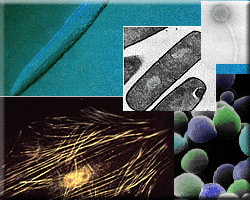Nanotech Safety 'Not Rocket Science,' Expert Says

The specific health and safety questions that are important to be addressed for nanotechnology are reasonably straightforward, an expert in nanotech safety plans to tell the U.S. government's first public meeting focused exclusively on research needs and priorities for the environmental, health and safety risks of engineered nanoscale materials.
"Prioritizing nanotechnology risk research isn't rocket science," Andrew Maynard, Project on Emerging Nanotechnologies chief scientist, plans to tell the meeting.
Nanotechnology is the ability to measure, see, manipulate and manufacture things usually between 1 and 100 nanometers. A nanometer is one billionth of a meter; a human hair is roughly 100,000 nanometers wide.
More than $32 billion in products containing nano-materials were sold globally in 2005. But 2014, Lux Research projects that $2.6 trillion in manufactured goods will incorporate nanotechnology. For instance, there are 130 nano-based drugs and delivery systems and 125 biomedical devices in preclinical, clinical or commercial development -- an increase of almost 70 percent since 2005.
The Project on Emerging Nanotechnologies is an initiative launched by the Woodrow Wilson International Center for Scholars and The Pew Charitable Trusts in 2005. It is dedicated to helping business, government and the public anticipate and manage possible health and environmental implications of nanotechnology.
Much has already has been published about what is known and is not known about the potential risks and about how to fill existing research gaps, Maynard plans to say, according to remarks planned for delivery and offered to reporters early on an embargoed basis.
"Far harder is getting the federal government to take action in three critical areas: first, documenting what relevant risk research exists;second, ensuring that agencies responsible for oversight and related research -- the Environmental Protection Agency (EPA), Food & Drug Administration (FDA), National Institute of Environmental Health Sciences (NIEHS), National Institute for Occupational Safety & Health (NIOSH), the Consumer Product Safety Commission (CPSC) -- are adequately funded; and third, developing a robust, top-down research plan that can be implementedby the U.S. government and used for collaborations with industry and with researchers in other countries," says Maynard.
Nano Demo
During his presentation Maynard plans to mix a powdered nano calcium and magnesium dietary supplement into a glass of water to help illustrate key risk research questions the federal government needs to tackle: what effectdo airborne nanoparticles have on the lungs, do nanoparticles penetrate theskin, what happens to nanoparticles in water, how do they behave in the gastrointestinal tract, and what happens to nanoparticles when they are poured down a drain and enter the waste stream?
Maynard is to point out that these are "obvious questions" but "ones that should be considered when prioritizing research."
"It is important toremember that risk research has a purpose -- to protect people and the environment from harm," he is to say.
Maynard emphasizes that, "[w]hile exploratoryresearch has its place, it is not always the best model for providing workable answers to definite questions needed by regulatory agencies."
"Nanotechnology is no longer a scientific curiosity. It is in the workplace, the environment and the home," Maynard is to say. But if people are to realize nanotechnology's benefits -- in medicine, communications, and energyproduction -- the federal government needs a master plan for identifying and reducing potential risks. This plan should include a top-down risk research strategy, sufficient funding to do the job, and the mechanisms toensure that resources are used effectively. "
Maynard proposes that the federal government invest a minimum of $100 million over the next two years in targeted risk research in order to lay a strong, science-based foundation for safe nanotechnology. According to Maynard's analysis, despite investing more than $1 billion annually on nanotechnology research, U.S. government spending on highly relevant nanotechnology risk research is only $11 million per year.
Maynard's presentation draws heavily from his 2006 report, Nanotechnology: A Research Strategy for Addressing Risk, and from a recentpaper in Nature, "Safe handling of nanotechnology" (Maynard et al., vol.44, 16 November 2006).
Bookmark http://universeeverything.blogspot.com/ and drop back in sometime.


0 Comments:
Post a Comment
Subscribe to Post Comments [Atom]
<< Home